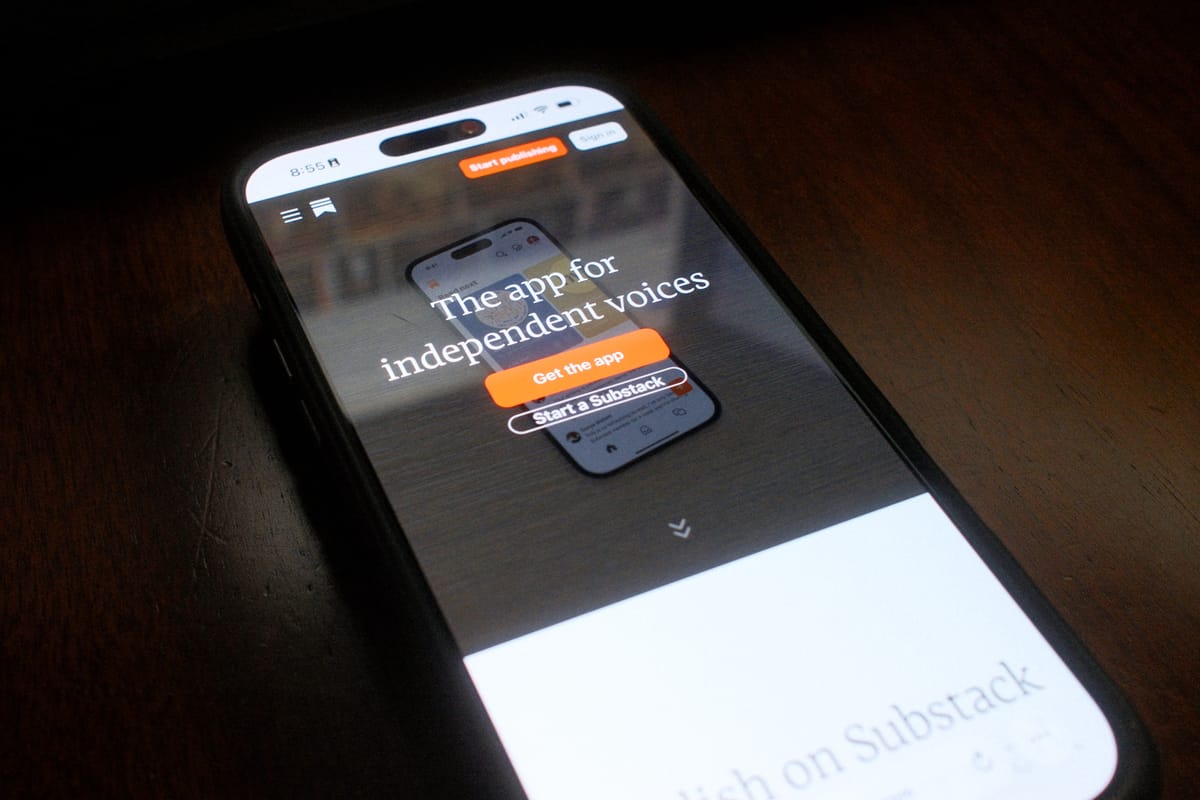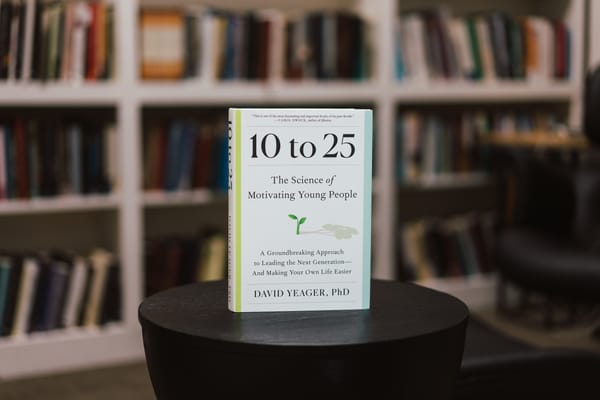Substack: The Intellectual's Social Media Trap
Substack promised newsletters but delivered another social feed. By disguising attention-harvesting as 'intellectual reading,' it slips past our digital defenses. We came for thoughtful writing; we got social media app filled with notes, follows, and endless scrolling.

Some of my favorite publications have found their home on Substack: Ultra Successful with Dr. Julie Gurner, Rethink with Rachel Botsman, Admired Leadership, and Ethan Mollick's writing on AI. As a reader, though, I have become increasingly frustrated. I get pulled into notes, recommendations, and the confusion between following and subscribing. The app thirsts for engagement, as with all social media, with promises to the writers that this is how you keep your audience. Not to mention, using RSS with Substack is a nightmare, though I have developed a system that works for now as it keeps me out of the app, which is a time suck.
I'm definitely not alone in the critique that Substack is becoming another social platform, but the better question is how it differs from Twitter, Instagram, or Threads. Those platforms are obvious in their costs: low-quality information, the never ending scroll, and companies that profit from harvesting attention. Substack feels different. I get value there that I do not get on Instagram. But it has hijacked the intellectual side of people for constant attention for growth for Substack, for the VC funding, it's always about growth. For companies like this there is never optimization for the user experience but optimization for growth, which may or may not enhance the users experience.
Channelling the classic Neil Postman critique, the medium is the message (fun fact, this was actually coined prior to Postman by Marshall McLuhan). For the writers how does the medium of Substack, which pushes for getting the next followers, to show up on Substack's recommendations, the hook for new users. Do writers optimize now for this? I'm sure they do. Do writers begin to write for the kinds of engagement the platform rewards?
Their feed looks like intellectual reading, the engagement on "important" items seems like a way to grow as a leader, manager, or just bettering myself. The in your face network effects of finding the next feed, the next good writer, the next thing that draws me in is always there.
The Quality Trap
Traditional platforms like Twitter, Facebook, or Instagram maximize on shallow participation and engagement. As Nicholas Carr puts it in The Shallows, "when we go online, we enter an environment that promotes cursory reading, hurried and distracted thinking, and superficial learning." Substack's twist is to apply the same mechanics to "serious" reading. Inside the app, notes, recommendations, and follows turn subscriptions into a feed. Substack touts to their writers that a large share of new signups now come from in-app discovery, which means your next read is often chosen by the platform, not by you. As your reading becomes network-driven, your independence suffers. You came for a newsletter but you end up just scrolling the never ending feed or articles, posts, and comments. Mind numbing, just like Twitter, Threads, or Instagram.
The Productivity Machine
The loss for us, the readers, is not financial through subscription fee, though you do have to wisely choose who you're going to subscribe to. It is a daily tax on attention every time you pull out your phone. Notes (basically Substack's version of Thread posts or tweets), recommendations, and comments, all create new inboxes to check and numbers to chase. Because Substack presents all this as "intellectual reading," it slips past my digital protections. Jacob Ward in The Loop says this well, "Our unconscious tendencies are the control surfaces by which technology will shape our lives." Platforms convince us we're choosing freely when we're not. I set limits on Instagram and deleted X, but Substack gets a pass because I tell myself this is actually good for me. Then an hour disappears to quasi-productive engagement that postpones real work that must get done. Substack's recent emphasis on social features over core email tools only reinforces this pull.
Network Effects and Lock-in
Network effects turn convenience into dependence. Substack says its network drives a large share of new and paid subscriptions, so writers end up writing for the network's incentives. Growth often depends on being recommended inside the app, which rewards work that is easy to share and quick to scan. Over time every writer's style tilts toward platform norms and away from the writer's voice. Readers begin engaging with a platform pattern rather than a publication unique to each writer. When people say they read "a Substack," the branding has already flipped.
The trap is complete: writers need the platform's distribution to find readers, readers get hooked on the platform's discovery features to find writers, and Substack harvests the attention of both. The platform doesn't care if writers burn out chasing metrics or if readers lose hours to pseudo-productive scrolling. It only cares about growth, which is new users, more engagement, higher retention. Writers become content suppliers for a platform that treats them as interchangeable, while readers become the product being sold to venture capitalists as "highly engaged users."
Treat Substack Like Social Media
At the end of the day, Substack has just turned into another social media platform with a twister of being a way to directly connect and read your favorite writer's content. It is that but it is so much more.
Below are a couple things that I've done over the past couple months that fit more in line for treating Substack like social media verse purely a way to read writings from my favorite thought leaders:
Delete the app. Delete it. Substack wants you to be in the app and not leave, engagement wins the day for them.
Use RSS to bypass discovery. Add each publication's RSS (usually sitename.substack.com/feed) to an RSS reader. Good options: Lire, Fiery Feeds, or Inoreader (my current choice). For paid publications you can use Gmail's "forward to" and utilize whatever RSS engine gives you a newsletter email to use. This completely removes you from Substack's algorithmic recommendations and social features. You read what you chose to subscribe to, nothing more, nothing less.
Create intentional reading windows. Batch Substack to one or two windows per day. If something isn't worth opening in that window, archive it. The platform thrives on making every piece feel urgent and unmissable. But most content can wait, and if it can't survive a few hours' delay, it probably wasn't that essential to begin with.
If you don't do RSS then:
Stay in email. Subscribe by email and read in your inbox. Create a rule that labels Substack, skips the inbox, and delivers a daily bundle at a set time. Turn off "open in app" prompts and mute all push notifications. It takes some work on the front end but it's worth it. This way, you're engaging with the content on your schedule, not when the platform's algorithms decide to notify you.
Just remember, we, the readers, are becoming the product for Substack. The vision for reader-writer connection is still there but its a pale representative from what it used to be.




